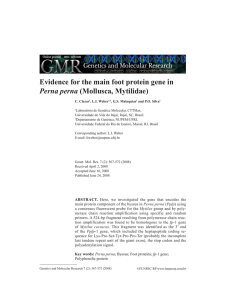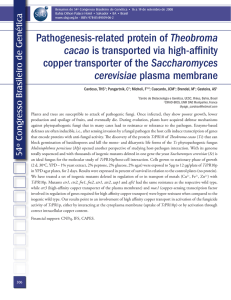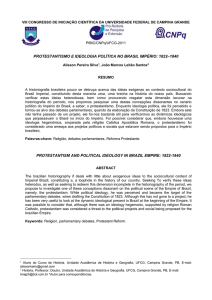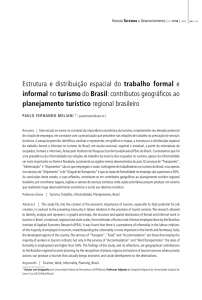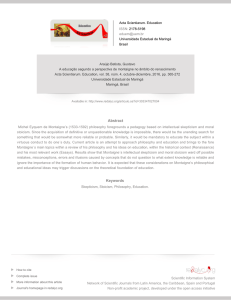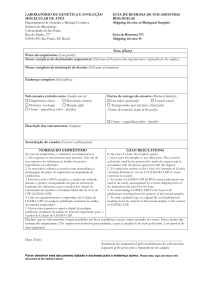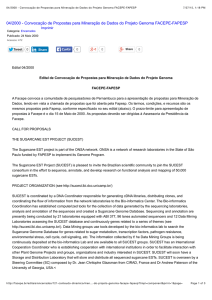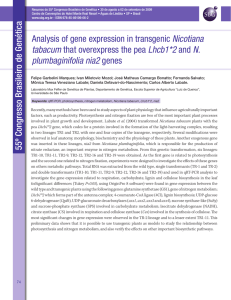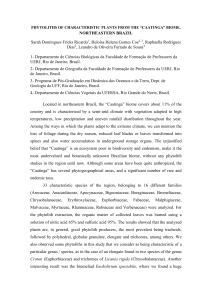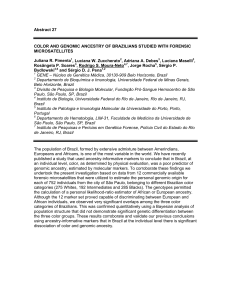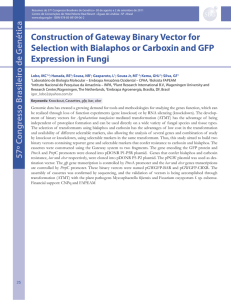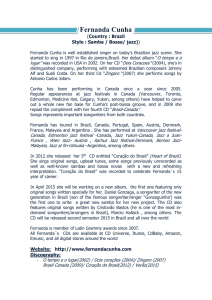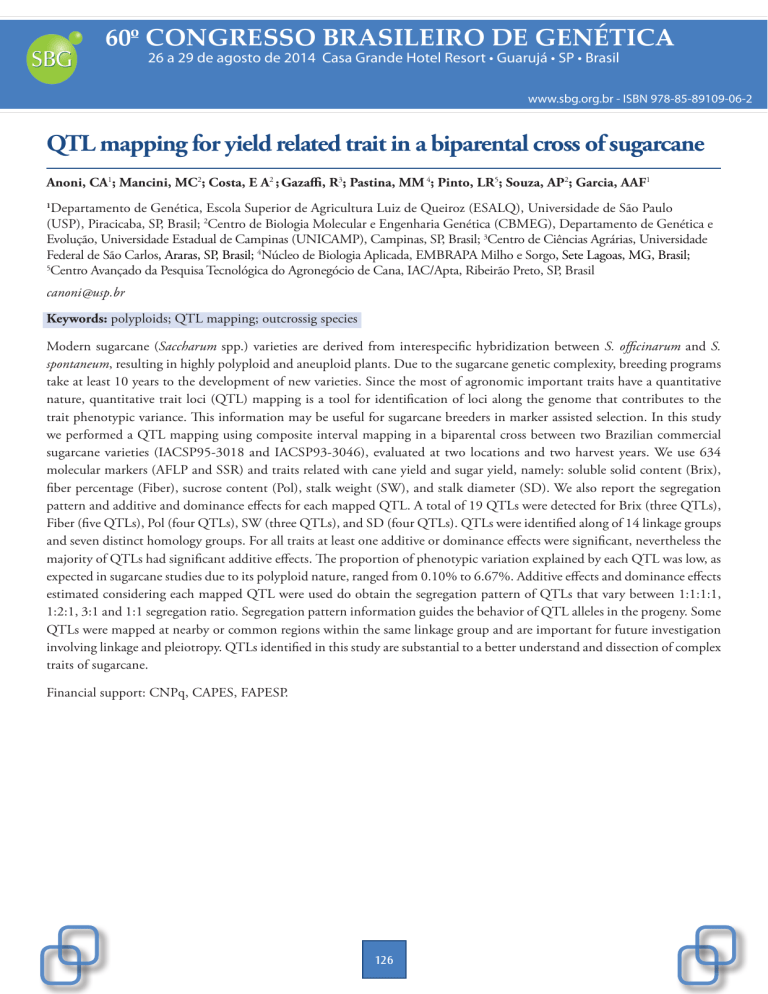
60º CONGRESSO BRASILEIRO DE GENÉTICA
26 a 29 de agosto de 2014 Casa Grande Hotel Resort • Guarujá • SP • Brasil
www.sbg.org.br - ISBN 978-85-89109-06-2
QTL mapping for yield related trait in a biparental cross of sugarcane
Anoni, CA1; Mancini, MC2; Costa, E A2 ; Gazaffi, R3; Pastina, MM 4; Pinto, LR5; Souza, AP2; Garcia, AAF1
Departamento de Genética, Escola Superior de Agricultura Luiz de Queiroz (ESALQ), Universidade de São Paulo
(USP), Piracicaba, SP, Brasil; 2Centro de Biologia Molecular e Engenharia Genética (CBMEG), Departamento de Genética e
Evolução, Universidade Estadual de Campinas (UNICAMP), Campinas, SP, Brasil; 3Centro de Ciências Agrárias, Universidade
Federal de São Carlos, Araras, SP, Brasil; 4Núcleo de Biologia Aplicada, EMBRAPA Milho e Sorgo, Sete Lagoas, MG, Brasil;
5
Centro Avançado da Pesquisa Tecnológica do Agronegócio de Cana, IAC/Apta, Ribeirão Preto, SP, Brasil
1
[email protected]
Keywords: polyploids; QTL mapping; outcrossig species
Modern sugarcane (Saccharum spp.) varieties are derived from interespecific hybridization between S. officinarum and S.
spontaneum, resulting in highly polyploid and aneuploid plants. Due to the sugarcane genetic complexity, breeding programs
take at least 10 years to the development of new varieties. Since the most of agronomic important traits have a quantitative
nature, quantitative trait loci (QTL) mapping is a tool for identification of loci along the genome that contributes to the
trait phenotypic variance. This information may be useful for sugarcane breeders in marker assisted selection. In this study
we performed a QTL mapping using composite interval mapping in a biparental cross between two Brazilian commercial
sugarcane varieties (IACSP95-3018 and IACSP93-3046), evaluated at two locations and two harvest years. We use 634
molecular markers (AFLP and SSR) and traits related with cane yield and sugar yield, namely: soluble solid content (Brix),
fiber percentage (Fiber), sucrose content (Pol), stalk weight (SW), and stalk diameter (SD). We also report the segregation
pattern and additive and dominance effects for each mapped QTL. A total of 19 QTLs were detected for Brix (three QTLs),
Fiber (five QTLs), Pol (four QTLs), SW (three QTLs), and SD (four QTLs). QTLs were identified along of 14 linkage groups
and seven distinct homology groups. For all traits at least one additive or dominance effects were significant, nevertheless the
majority of QTLs had significant additive effects. The proportion of phenotypic variation explained by each QTL was low, as
expected in sugarcane studies due to its polyploid nature, ranged from 0.10% to 6.67%. Additive effects and dominance effects
estimated considering each mapped QTL were used do obtain the segregation pattern of QTLs that vary between 1:1:1:1,
1:2:1, 3:1 and 1:1 segregation ratio. Segregation pattern information guides the behavior of QTL alleles in the progeny. Some
QTLs were mapped at nearby or common regions within the same linkage group and are important for future investigation
involving linkage and pleiotropy. QTLs identified in this study are substantial to a better understand and dissection of complex
traits of sugarcane.
Financial support: CNPq, CAPES, FAPESP.
126

